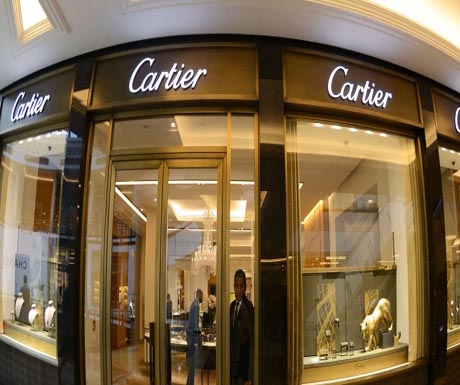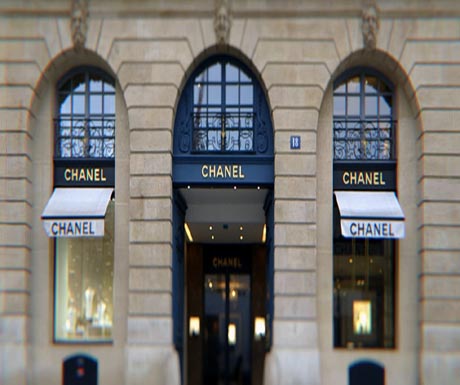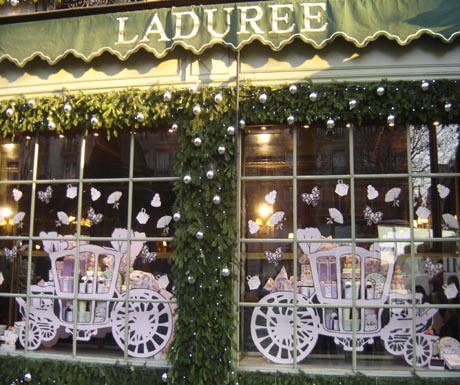Though Christmas is finished for this year,its spirit lingers in our streets. You might be a bit frustrated with your gifts, or you can also regret you did not take enough time to choose the right present for the right person. Dont worry; here are three of our more historical brands and shops in Paris where you can repair that if you ever come to our town in January.
Cartier
It is said that human perfection can only be reached in the intricate detail of, for example, watch making, or within mathematical abstractions such as e=mc. I would place Cartier jewellery in the first category. The house who celebrated its 165th anniversary a few years ago still has an operating profit which increased. Stones, diamonds and pureness have always been the operative words at Cartier. They have served the house well, which has become one of the most prestigious brands of jewellery and watch making in the world.

Cartier was set up in Paris in 1847 by Louis Franois Cartier. In 1899, Alfred Cartier moved the family business to the Rue de la Paix in Paris. Boutiques were also opened in London, New York, Zurich, Paris, Cannes, Lyon, Monaco, Casablanca, Geneva, Mexico, Milan, Bologna, Moscow, Tokyo, Beijing, etc. Today Cartier has a world-wide presence with more than 300 boutiques and 5,500 employees. Its success is due, in particular, to its expertise. Cartier was one of the first to offer platinum jewellery and in 1904 it designed the first wrist watch. In 1910, the Panther became the houses icon. Major landmarks in
Cartiers history were subsequently launched: the Santos watch, the Tank watch, the Trinity ring and the Love bracelet. In 1982 the Cartier Foundation for contemporary art was set up and in 1989 the Art of Cartier exhibition in Paris was one of its major retrospectives. More recently, the brand launched the Astrotourbillon movement timepieces and brought out its new Calibre watch.
In short, as you have no doubt understood, Cartier is one of the greatest temples to expert craftsmanship on the planet and is highly profitable. This comes about through the making of perfect creations which satisfy the human desire for beauty. We can only hope that Switzerlands financial sector today will be able to resist the temptation to demand “more and more money”, to which other luxury brands have conformed. One of those I have been told (although things have been rectified since) is Christian Dior. This other venerable institution allowed one of its American manufacturers to put the CD logo on some very tacky mens underwear which was on sale in hypermarkets in Kansas.
Chanel
Chanel is a fashion house which has stood the test of time, moving with the trends whilst remaining true to its founding principles. Today, haute couture is above all focused on expertise. It is a question of showcasing the “industrious hands” and “great minds” which bustle about to bring these luxury products to life. Chanel is a past master at this game.

Mythical birthplace of Coco Chanel and home of the new master-in-residence since 1983, Karl Lagerfeld, the ultra-luxurious Parisian address is located at 31 Rue Cambon. There are, most certainly, other well-known address of leading fashion houses such as Dior and Yves St Laurent. But this one is the most illustrious. Spread over several floors, the elegant range on offer by this brand depicted by two intertwined Cs includes perfume, clothing, shoes and leather goods. On one side is the area dedicated to ready-to-wear clothing and beauty. On the other, a magnificent staircase leads to the haute couture section. Everything is in place to appeal to women. Run by Jack Wertheimer, Chanel employs more than 3,000 people in France and refuses to use any type of outsourcing.
There is, of course, on element missing: Mademoiselle Chanel, who died aged 88 in 1971, becoming an instant legend. . A nonconformist, a gifted, provocative and daring woman, Coco Chanel rejected the fashions of the era, corsets and full dresses, favouring an androgynous look with straight dresses and trousers. She would always fight for fashions which enabled women to move freely, to express themselves and to feel liberated. Over the course of collections, Chanel began to establish itself through the richness, the elegance and the sophistication of its creations. Everyone remembers the famous little black tweed dress and Chanel No. 5 perfume. The range extended into clothing, perfumes, bags, jewellery and other accessories, the distinctive style of which has never deviated from the linear designs so cherished by Coco Chanel. The little black viscose dress with a silver metal belt, the woollen, silk and mohair tweed suit and the metallic leather bowling bag are all magnificent examples.
The 90s saw the beginning of a new era with Chanel expanding its range. Having previously focused primarily on fashion, Chanel decided to move in to watchmaking. The Premire was the first in a string of successes. As Coco Chanel famously said once “Fashion goes out of fashion, style never does”. Her fashion house is, for its part, always fashionable. She was therefore doubly right. Rest in peace, Mademoiselle, you certainly deserve it.
La Dure
If I say gastronomy to you and I mention the words luxury, France, you should already have an inkling of what the subject will be. If I add patisserie known and admired the world over, any lingering doubts will evaporate and the delicious syllables of this prestigious brand will fall into place: Ladure.

First I would like to invite you to look back briefly over the emblematic origins of the shop This Rue Royale bakery, which became a patisserie thanks to a chance fire, was lucky enough to benefit from the hustle and bustle of the Madeleine district, a thriving business centre and favourite meeting place for Parisians. The final ingredient was a brilliant idea from the founders wife, who wished to cater to the needs of a specific clientele. Following the fall into disuse of many tea rooms, and put off by the overly masculine atmosphere of bistros, the women of Paris needed a place to meet. The ground floor, already decorated by a famous painter, was therefore extended to include an equally splendid first floor, which was used as a tea room.
Thus the Ladure Family introduced the concept of the tea room to France and became the first establishment to offer women a place for relaxation and discussion that is very sought-after today. But the companys crowning moment the endeavour that earned it its world renown came when Pierre Desfontaines, the grandson of the patisseries founder, had the crazy idea of sticking two macarons together with a cream with a mixed flavour. The success of this snack, combined with the idyllic setting of the tea room, was to transform the family business into a global reference forever.
I dont want to carry out a fastidious analysis of the companys history, but we can still marvel at the charm with which these little treats developed and anchored an identity. The visual identity of the brand continues to generate fascination and attempts at imitation; many would like to share the icons renown. Thus we can note, that they were featured in Sophia Coppolas film Marie-Antoinette, or that they were mentioned in the lyrics of Helmut Fritzs song Ca mnerve . Moreover, the singer highlights the link between the popularity of Ladures macarons and how delicious they are.
In the 90s, the company was bought over by Groupe Holder, which gave it the impetus needed to burst onto the international stage. The number of sales outlets greatly increased, forcing the managers to find a less costly way to create their different pastries, which are now prepared on an industrial estate in Morangis. Dont think this means theyre made in a factory, though! The correct term is a laboratory, and the preparation process is in keeping with the traditional method (as far as possible), that is now over a hundred years old. Despite the introduction of a cold chain which does not actually concern the macarons sold in Parisian tea rooms all the sweets and pastries are still made by hand, under the supervision of prestigious creative masters (including, but not limited to, Pierre Herm).
Admittedly, there are plenty of critics around today who are eager to point out the artificial ingredients used in Ladure products. But global recognition has its price, and the chefs have had to adapt in todays changing climate. Despite the changes made to the recipes, their charm remains intact, and the brands image has even allowed it to start selling cosmetics, stationery and room perfumes. Lets just hope that this figurehead of French gastronomy will never neglect its duty to excellence in favour of hasty expansion. So many of Frances producers of luxury goods have already shown their lack of scruples, shamelessly giving in to commercialism, that it would be a real shame not to support this true jewel of our heritage.